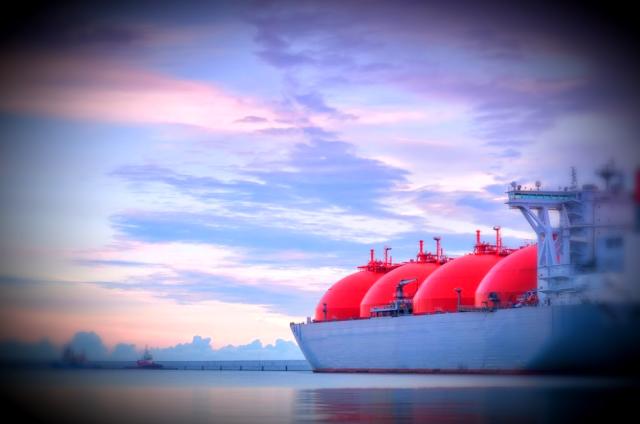
(Source: Shutterstock.com)
The expansion of existing export terminals and the development of new facilities has been touted as the answer to easing the glut and restoring a sense of price stability to the U.S. market. That was the general feeling among industry observers until the deadly coronavirus erupted in China and spread quickly, sending tremors rippling throughout the business world, particularly the transportation sector and the producers of fuel products.
These days one can rarely read the business pages without some reference to oil and gas export terminals. Here are some recent announcements from developers:
- New Fortress Energy LLC on Feb. 10 reported signing a long-term supply agreement for the purchase of 27.5 million British Thermal Units (MMBtu) of LNG annually through 2030. The LNG terminals and infrastructure are planned for northern Pennsylvania, to be connected to an export pier to be built on the Delaware River;
- NextDecade Corp. reported on Feb. 10 that it had received approval from the U.S. Department of Energy to export LNG from its Rio Grande facility to non-free trade agreement countries. NextDecade is now authorized to export 1,318 billion cubic feet (Bcf) of natural gas per year from the facility to FTA and non-FTA countries. If built to capacity, the Rio Grande project, which includes a pipeline, represents an investment of over $15 billion. The Federal Energy Regulatory Commission approved the project last November and on Jan. 23 issued its final order denying rehearing requests;
- Annova LNG LLC on Jan. 22 reported signing a 20-year supply deal with Enbridge Inc. for a proposed plant at the Port of Brownsville, Texas;
- Sempra Energy reported on Dec. 30 startup of a second unit at its $10 billion LNG Cameron terminal in Hackberry, La., that is scheduled to load onto cargo ships during first-quarter 2020, with a third train scheduled to start exporting in third-quarter 2020;
- Cheniere Energy Inc., the leading LNG producer and exporter in the U.S., received approval on Nov. 21 for its Corpus Christi Stage 3 expansion, which includes seven mid-scale liquefaction trains;
- Tellurian Inc. received approval on Dec. 19 for site preparation for its $27.5 billion Driftwood LNG export terminal in Louisiana. Construction is scheduled to begin this year with first production in 2023;
- Sempra Energy and Saudi Aramco subsidiaries signed an Interim Project Participation Agreement on Jan. 6 for a multibillion-dollar Port Arthur LNG export project under development in Southeast Texas;
- Kinder Morgan Inc. on Jan. 9 asked federal regulators for approval to put a fourth liquefaction train in service at its $2 billion Elba Island LNG export terminal in Georgia. The first export cargo from Elba left in December; and
- Enbridge and Enterprise Products Partners LP reported on Dec. 19 a letter of intent to jointly develop a deepwater crude oil terminal in the Gulf of Mexico capable of fully loading VLCCs, centered on Enterprise’s Sea Port Oil Terminal (SPOT).
‘Serious Complication’
Jason Feer, global manager business intelligence for Poten & Partners Inc., a Houston-based energy and ship brokerage, follows global energy and told Hart Energy that “China has turned into a serious complication” for U.S. exports, citing “multiple force majeure declarations and a serious decline in demand going forward.”
He was referring to the Feb. 6 announcement by China National Offshore Corp., the largest LNG importer in China, that it was suspending contracts with at least three suppliers because of the fast-spreading coronavirus. Possibly as a result, Australia’s Woodside Petroleum Ltd., one of China’s biggest LNG suppliers, announced a delay on an investment decision for an enormous LNG project.
“Part of the disruption is attributable to the coronavirus, but the economy was slowing down before that and a warm winter had led to full tanks and low demand even before the outbreak. European economics are almost at shut-in/rejection levels. Asia is a little better, but still hovering just above the level at which lifters would cancel cargoes.
“It’s going to be a very difficult spring and summer for sellers. [It] looks like this may kill off some projects that were hoping to go to FID (final investment decision) this year,” Feer said.
Reuters reports that some analysts are reducing their gas import totals for China, the world’s largest importer of natural gas, due to the continuing threat posed by the spreading outbreak of coronavirus. Two analysts told the news agency they expect gas demand in China to expand just 6% this year vs. nearly 10% growth that was expected in 2019. This could significantly impact LNG imports, which are costlier than pipeline gas imports. No U.S. LNG cargoes have been delivered to China since March 2019.
“It is highly unlikely that other suppliers of LNG will readily relinquish market share for the sake of a U.S.-China trade deal; rather, the terms of trade across all markets must be sufficient for such an outcome to occur,” wrote energy researchers at Rice University’s Baker Institute for Public Policy, in reference to phase one of the Jan. 15 trade deal which is supposed to include renewed deliveries of U.S. LNG.
“Unless China removes or reduces the 25% tariff on U.S. LNG that was effective June 2019, it remains a challenge for Chinese gas buyers who already bear losses to import a large amount of U.S. LNG. Overall, other than a potential reduction in global LNG demand due to an economic slowdown, the trade war is likely to lead to a reshuffling of the LNG supply portfolio, or who supplies whom, but it is unlikely to change aggregates,” according to the Rice researchers.
On Feb. 18, the Chinese State Council's Tariff Commission said it would accept applications for tariff exemptions for LNG as of March 2.
Analysts from Bernstein bleakly predicted that China’s LNG demand is expected to only grow by 4% year-on-year, compared with previous estimates of 13%. Fitch Ratings also pointed out that the supply/demand rebalancing expected this year will likely be delayed because of the outbreak.
Shut-ins Likely
How does this affect U.S. producers? Bernstein says Asian spot prices trading at $1 per MMBtu below U.S. LNG producers’ cash breakeven of $3.80, are unsustainable and could reduce the U.S. LNG supply. Producers have already been beset by a warmer winter in the U.S. and the lengthy trade war between the U.S. and China while new projects in the U.S. and Australia have increased supply.
Fitch agreed that sustained prices below $3 will lead to production shut-ins in the U.S. “A prolonged period of low spot prices could also spark contract renegotiations between suppliers and customers in Asia, where contracts are oil-linked, and slow down prospective projects.”
The U.S. Energy Information Administration has estimated that by 2025, the U.S. will have the world’s greatest LNG export capacity, exceeding Australia and Qatar. The International Energy Agency has predicted the U.S. will add 30% of global gas production through 2030 and could reign as the largest exporter by 2025.
Including projects under construction, U.S. LNG export capacity is expected to reach 9.6 Bcf/d in 2020 and 10.3 Bcf/d in 2021, from 7.6 Bcf/d in January. In 2019 the Department of Energy granted 11 new long-term LNG export approvals, including two under the new small-scale export rule. Meanwhile, two new large-scale terminals came online along the Gulf Coast and the U.S. now exports two cargoes of LNG almost daily. When the first wave of projects is built out, exports may reach 60 million to 70 million tons of LNG.
Last September the U.S. exported 89,000 barrels per day (bbl/d) more petroleum (crude oil and refined products) than it imported, the first month this has happened since monthly records began in 1973. Crude exports are the largest contributor to U.S. petroleum export growth, from 591,000 bbl/d in 2016 to 2.8 million bbl/d in 2019.
Recommended Reading
US Natgas Prices Hit 5-week High on Rising Feedgas to Freeport LNG, Output Drop
2024-04-10 - U.S. natural gas futures climbed to a five-week high on April 10 on an increase in feedgas to the Freeport LNG export plant and a drop in output as pipeline maintenance trapped gas in Texas.
US NatGas Flows to Freeport LNG Export Plant Drop Near Zero
2024-04-11 - The startup and shutdown of Freeport has in the past had a major impact on U.S. and European gas prices.
US NatGas Futures Hit Over 2-week Low on Lower Demand View
2024-04-15 - U.S. natural gas futures fell about 2% to a more than two-week low on April 15, weighed down by lower demand forecasts for this week than previously expected.
Heard from the Field: US Needs More Gas Storage
2024-03-21 - The current gas working capacity fits a 60 Bcf/d market — but today, the market exceeds 100 Bcf/d, gas executives said at CERAWeek by S&P Global.
Report: Freeport LNG Hits Sixth Day of Dwindling Gas Consumption
2024-04-17 - With Freeport LNG operating at a fraction of its full capacity, natural gas futures have fallen following a short rally the week before.


